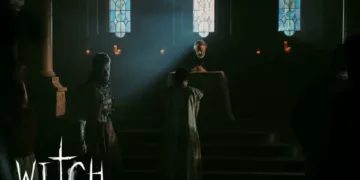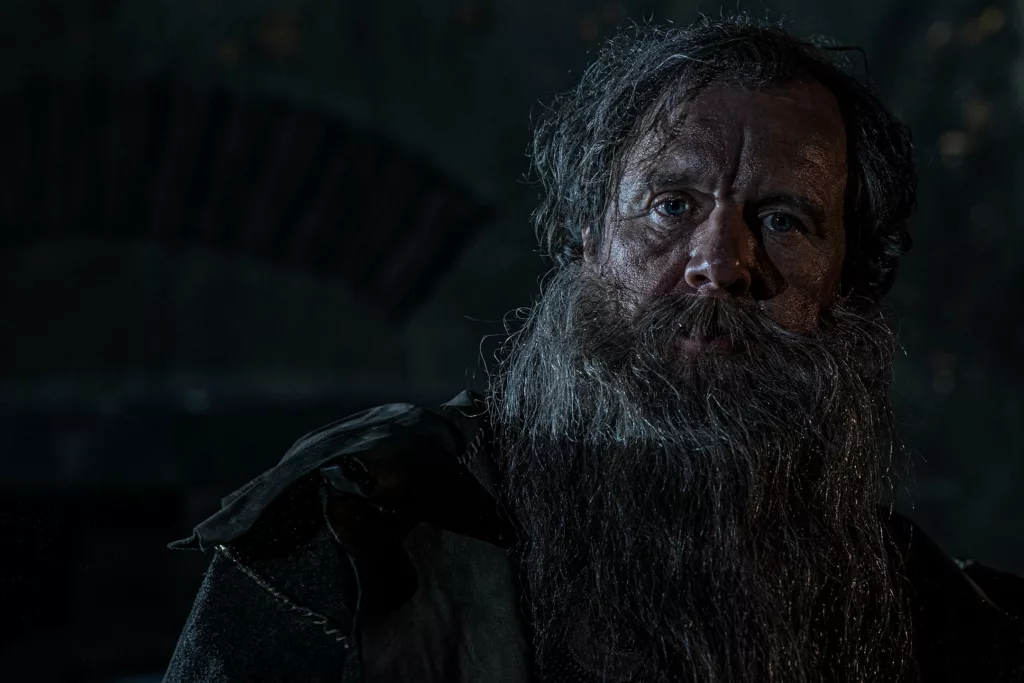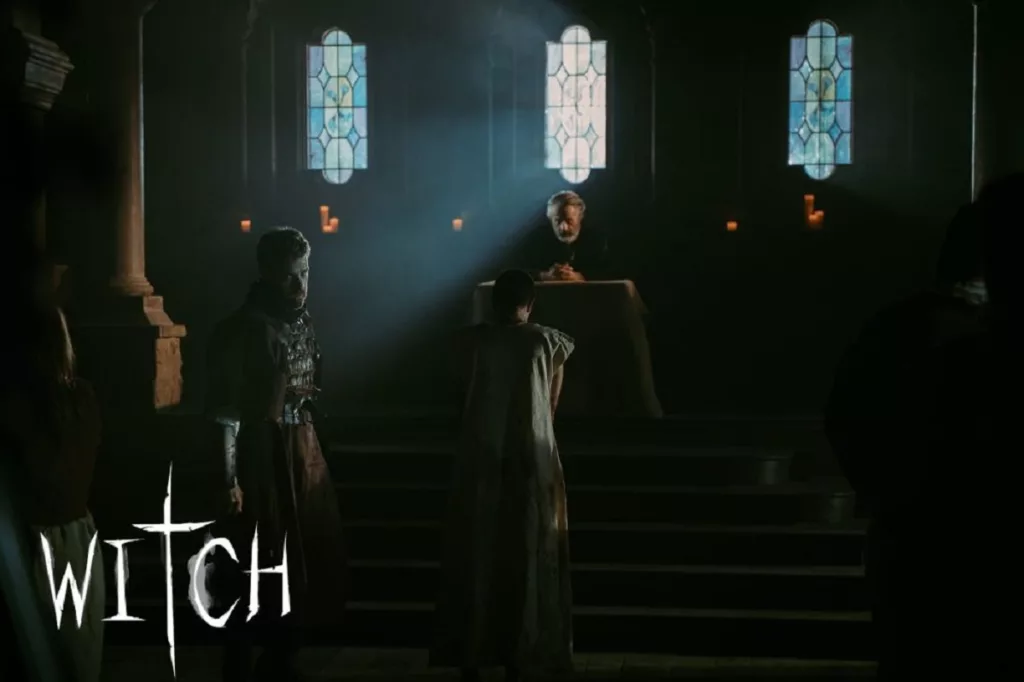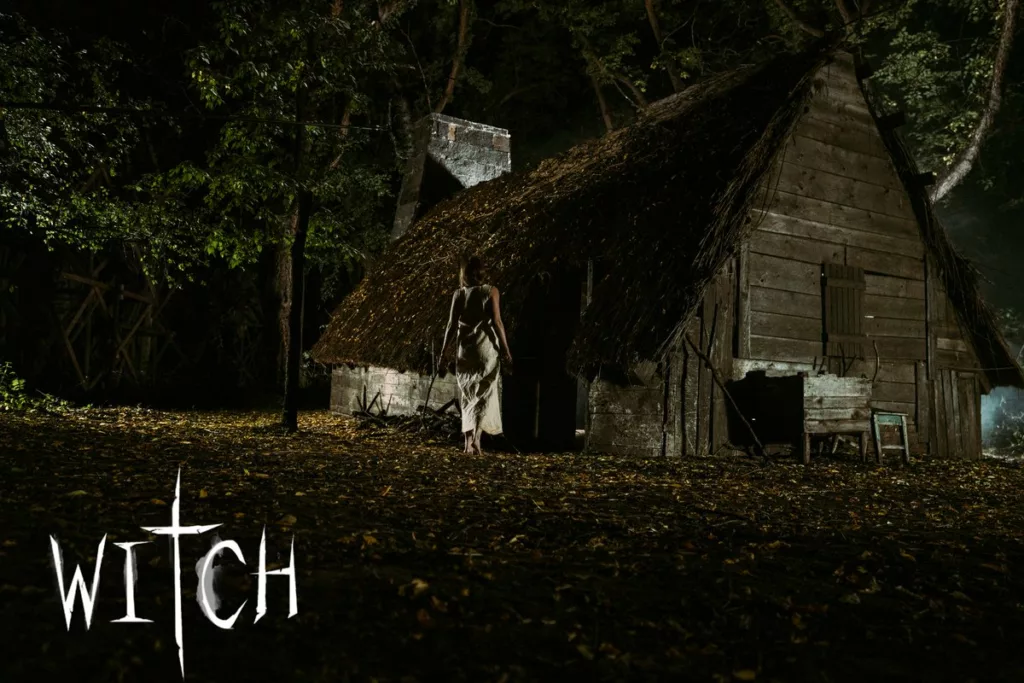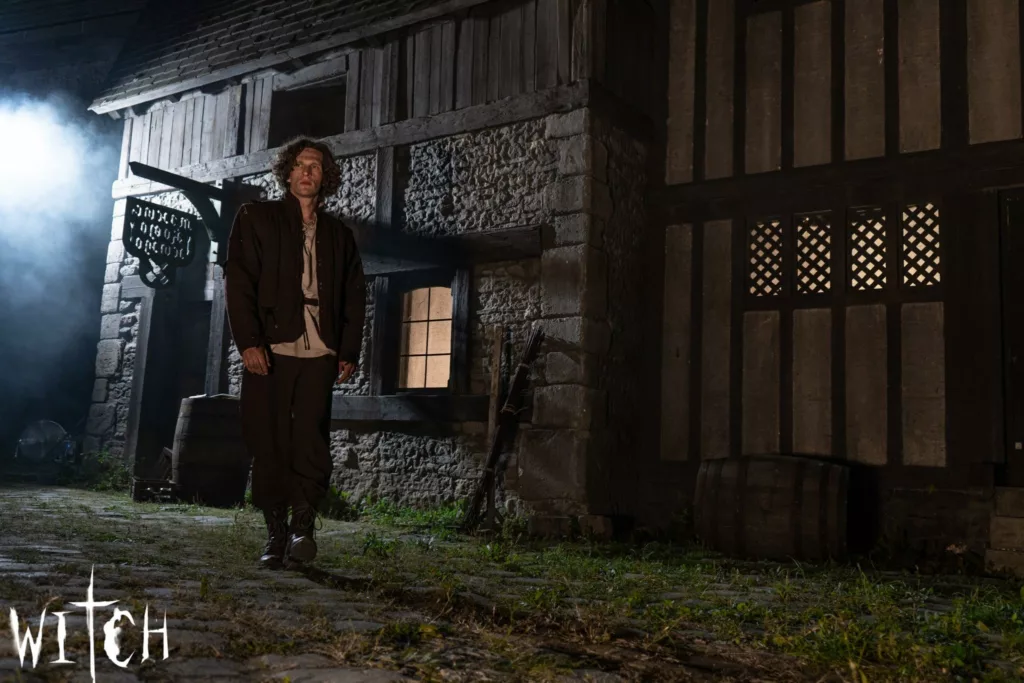Dark skies loom over the small village of Dawnbrook as rumors take root in sixteenth century England. Twyla, a kind wife and mother, finds herself thrown into a maelstrom as sinister forces gather against her. With only love and resolve to guide him, Twyla’s husband William sets out on a perilous quest to uncover the true evil haunting their community and save his beloved from the gallows.
Tensions mount as fear and ignorance work together to place an innocent in the hands of Judge Hopkins, a zealot determined to purge perceived sin wherever he sees it. While the seeds of unrest take hold among Dawnbrook’s residents, mysteries both natural and unearthly await William just beyond the village borders. As the hunt for answers leads him into shadowy forests and forgotten deeds, one truth becomes clear – overcoming the darkness will demand all of his courage, and force him to confront threats beyond any peasant’s worst nightmares.
Through it all, the ties that bind William and Twyla to one another offer their only hope against the gathering storm. But with danger looming on all sides, will their resilience and William’s resolve prove enough to withstand the evils massing against them?
Into the Wood
The small town of Dawnbrook provides the backdrop for this tale of love against injustice. It’s England in 1575 and superstition runs deep as shadows lengthen across the village. Among the close-knit community live William, a respected blacksmith, and his wife Twyla. Played by Ryan Spong and Sarah Alexandra Marks, their devotion shines through in even the simplest of moments.
But darkness is creeping in. First comes a gruesome crime that shakes the town to its core. Then, in the trial’s aftermath, a malicious finger points Twyla’s way and accusations of witchcraft arise. The staunch yet zealous Judge Hopkins, brought to life with relish by Daniel Jordan, is all too eager to crack down. Now finding herself facing death, Twyla puts her faith in William as he vows to prove her innocence.
Thus begins our hero’s perilous quest. With naught but love to guide him, William ventures into the surrounding woods seeking answers. There he crosses paths with Russell Shaw’s mysterious Thomas, a man who seems to know more than he lets on. As the lines between reality and folktale blur deeper in the forest, they draw ever closer to the true evil that stalks Dawnbrook’s residents.
Obstacles abound, from the lies of their accusers to terrors that defy explanation. Yet William and Twyla persevere, their bond carrying them through the darkest of valleys. For while justice may seem lost in a world of ignorance and fear, their deep love for one another remains the one light not even the strongest witchcraft can extinguish. And so the battles of forest and courtroom alike are joined, as one man fights to save his wife from wrongful death and restore reason to a town falling to madness in the looming shadows.
Achieving Authenticity on a Budget
Witch immerses viewers in its 16th century setting through painstaking production details. On a limited budget, the film transplants audiences to rural England through skilfully designed costumes and lived-in locations.
Jenny Anderson’s costumes feel thoroughly researched, dressing extras and leads alike in period-appropriate fabrics and styles. Their worn textures enhance believability. Similarly, director Craig Hinde chooses Hungarian establishing shots skillfully doubling for dreary English villages.
Through such authentic touches, the film establishes a vivid sense of place crucial for folk horror. It grounds the supernatural chills in factual history, making terrors all the more unsettling. Settings become not just backdrops but characters in their own right.
Some critiques note Witch shoots digitally rather than film. While crafting a crisp visual style, the crispness arguably works against grainy realism. However, creating 16th century verisimilitude digitally remains a massive challenge that Witch tackles impressively given constraints.
Overall production achievements outweigh this one debateable decision. On a low budget, replicating historical eras demands Herculean efforts that Witch largely satisfies. Through its environments and ensembles, the film spins an immersive world where magic and menace feel all too possible. Even if magical moments falter, the movie maintains horror in everyday authenticity.
When folk tales spring from truthful roots, they stick longer in the mind. Credit belongs to Witch’s behind-the-scenes artists who plant frightening fables in fertile soil of factual past. Their diligent work lends witching fears the ring of hidden truth.
Bringing the Characters to Life
The cast of Witch brew up believable characters, thanks to some standout performances that breathe life into this folkloric nightmare. Sarah Alexandra Marks owns the role of the distressed yet determined Twyla with nuanced emotion that keeps you invested in her plight from start to finish. Faced with unthinkable charges, her raw anguish and fight to maintain dignity rings true.
Equally compelling is Ryan Spong as devoted husband William. He leads a captivating adventure out of care for his wife, gifling tension-filled drama with every revelation. Through his eyes, the darkening mystery unfolds into real personal stakes. Together, Marks and Spong generate an authentic bond that propels the suspense until the unsettling end.
Aiding their chemistry is a skilled supporting cast. While some bit players lack necessary “period patina”, Russell Shaw sells Thomas’ ominous warnings with a haunting air of truth. He leaves you guessing his murky motives like the riddles he speaks. And while a tad overacted, Daniel Jordan relishes Judge Hopkins’ scary zeal in a way that curdles the blood.
At its best, Witch benefits from actors who transport you to the unforgiving 1600s world. Even when the plot wanders, their gripping performances ensure the eerie journey retains its disturbing power. It’s a testament to the cast’s abilities that this simmering scarefare remains so watchable despite flaws. Their haunting work lends this folk horror tale an aura of soulful authenticity.
Capturing the Chilling Atmosphere
Witch’s directors Craig Hinde and Marc Zammit clearly put a lot of effort into crafting an ominous visual style. They really transport you right into 16th century England, with details like costumes and set design that feel genuinely authentic to the period.
Everything from the lighting to the locations helps establish a sinister tone. Scenes are often dimly lit to play up an air of mystery and foreboding. You really get a sense of the dark forces lurking just out of sight.
The score really heightens the eerie feelings too. With its melancholic tones and dissonant notes, it leaves you on edge, like something terrible could strike at any moment. All the unsettling elements come together to keep viewers immersed in that chilling world.
Where the film risks losing some of its impact is an overreliance on dialogue over visually compelling shots. There are missed chances for creative camerawork or close-ups that could have amplified the raw emotions. More expressive cinematography may have added punch to intense scenes.
Still, Hinde and Zammit show real flair for crafting terror. With their meticulous production design and tension-building atmospheric touches, Witch remains an effectively creepy watch. It just leaves me wanting them to pair their skills with a story driving their vivid style even further. But they clearly take you on a chilling journey you won’t soon forget.
An Unexpected LEFT Turn
Witch starts out strong, setting the scene of this ominous witch trial period piece. You really feel transported to 16th century England. But then things take a turn that had me raising an eyebrow – the plot swerves hard into sci-fi territory.
Now, mixing genres can work fine if done right. But here it felt sudden and didn’t gel super well. We’re given vague explanations through dialogue instead of being shown memorable visuals. It muddies the waters of the story being told.
Some sequences also had me wondering “Hmm, does that make logical sense?”. Like why certain dangerous characters are left to wander freely when common sense says they should be restrained. Moments like that yanked me out of the suspenseful atmosphere.
Character backstories also feel light. I wanted to invest more in the folks at the center of it all. But they’re not fleshed out beyond basic details. So it’s tough to fully care about their plight.
Don’t get me wrong – the grim setting and creepy vibes kept me watching. But that unique hook risks getting lost amid questionable creative choices. The film could have packed a bigger punch by staying true to its folk horror roots and trusting viewers’ intelligence.
Still, credit is due for attempting something different within the well-worn witch trial genre. With refinement, maybe the directors’ vision will truly sing next time. As is, Witch remains an imperfect blend that never quite delivers on its dark potential. But it still puts its own curios spin on terrifying history that makes it worth a view.
Witch Brews an Intriguing, Flawed Tale
Witch has its fair share of ups and downs but ultimately crafts an atmospheric story steeped in folk horror intrigue. The grimy 16th century English village really pulls you in with its attention to detail. And the themes of false accusations and man’s inhumanity to man remain deeply unsettling.
However, things get muddled at times. The plot takes an unexpected sci-fi turn that doesn’t fully work. Some characters could also use more development to flesh them out. A bit more focus on visual storytelling versus lengthy dialog may have helped too.
Still, genre fans will find plenty to appreciate in its unholy blend of witch trials and supernatural mysteries. The performances keep you invested in leads William and Twyla’s desperate fight for survival. And striking imagery like the creepy opening ritual linger long after.
Overall, Witch’s strengths just outweigh its flaws to make it worth experiencing. Just go in ready to suspend your disbelief at certain points. I’m also curious how the teased sequel might refine its brew further. So while not perfect, this dark fable brings enough sorcery and scares to satisfy seekers of folk horror’s occult edge. Its ambitions, at least, deserve commendation even if the execution wavers.
Fans of gritty supernatural tales set in history would do well to add a viewing of Witch to their cauldron. Just be forewarned – this one may boil over with more questions than answers.
The Review
Witch
While flawed, Witch weaves a suspenseful tale through its unsettling portrayal of false accusations and superstition run amok. Uneven plot points and characterization hold it back, but the folk horror atmospherics and the leads' compelling journey keep viewers engaged until the end. Ambitious in scope yet restrained at times, it brews a chilling film experience that lingers in the memory.
PROS
- Authentic 16th century village setting and production design
- Tension-filled story exploring miscarriage of justice
- Strong lead performances by Marks and Spong
- Unsettling folk horror themes and atmosphere
CONS
- Plot takes an uneven turn with sci-fi elements
- Underdeveloped side characters and backstories
- Over- reliance on exposition heavy dialogue
- Lacks truly scary or suspenseful moments
